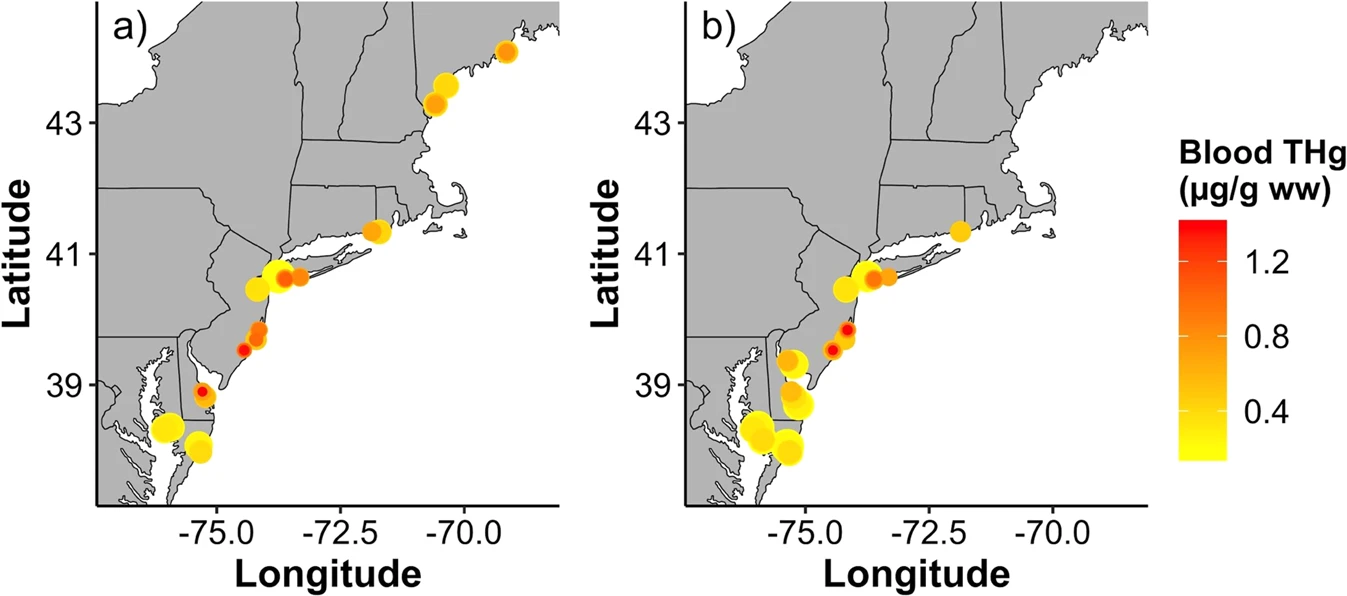Assessing mercury risk in a group of declining marsh birds
Birds
Mercury
Ecotoxicology
Salt marshes
Tidal marsh sparrows are species of conservation concern primarily due to global sea-level rise and habitat loss, but mercury pollution may present additional threats to their reproductive success and survival. We identified clear bioaccumulation differences between species of similar niches, as well as pollution hotspots in previously unsampled areas of their breeding ranges.

Citation
Sayers II, C.J., M.R. Roeder, L.M. Forrette, D. Roche, G.L.B. Dupont, S.E. Apgar, A.R. Kocek, A.M. Cook, W.G. Shriver, C.S. Elphick, B. Olsen, and D.N. Bonter. 2021. Geographic variation of mercury in breeding tidal marsh sparrows of the northeastern United States. Ecotoxicology 30(9):1929–1940. [Article]
Additional materials
Funded by the Cornell Lab of Ornithology, Cornell University, and Saltmarsh Habitat & Avian Research Program.